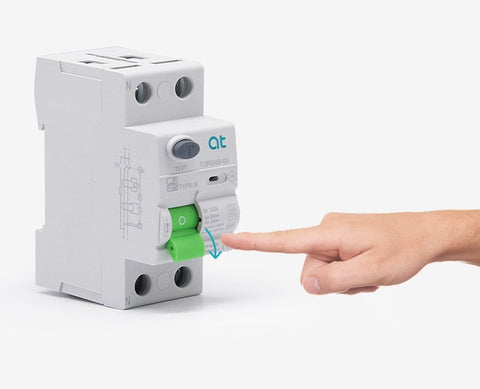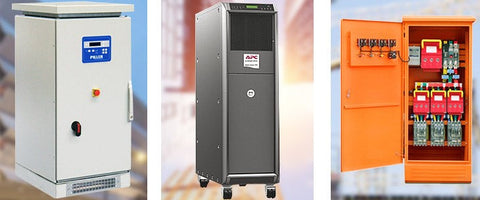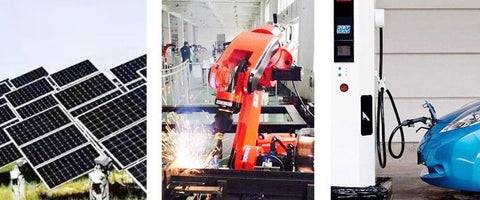What Is A Residual Current Circuit Breaker RCCB?
Residual Current Circuit Breaker is referred to as RCCB, it’s also called RCB and RCD. It is a leakage current sensing residual current device that detects current flow and automatically disconnects the circuit of any low-voltage circuit. The RCCB can work to protect against a defect developing in the connected circuit or the current exceeding the rated sensitivity at any time. The circuit breaker RCCB can identify and trip against electrical leakage currents, ensuring protection against electric shock brought on by indirect contacts.
Additionally, it guards against direct-contact electric shock or electrocution by monitoring the current flow in the line. In a functioning circuit, the current flowing through the line and returning to the neutral are equal. The main objective of installing a residual current circuit breaker is to protect human life from electric shocks or death. For example, if a person accidentally touches a live wire and there is no RCCB, an earth fault will occur, which puts them at risk of electric shock.

What are the main features of RCCB?
A residual current circuit breaker basically acts as a current sensor, cutting off any unbalanced current circuit anytime a problem arises. In essence, residual current circuit breakers are designed to protect people from electric shocks and electrocution. When it detects current escaping to the earth wire, it avoids mishaps by cutting off the main circuit in a split second. Additionally, it offers a defense against electrocution or electric shock brought on by direct touch. It is an apparatus with a mechanical switch and an integrated residual tripping feature. It only interrupts the circuit when there is an earth fault, this lowers the danger to human life.
If the fault is to earth, RCCBs can often handle a fault or residual current of 1 kA on their own. According to wiring regulations, other devices should be used in conjunction with RCCBs to give protection. The short circuit rating of RCCBs can be improved. For instance, a 1 kA rated RCCB can operate at a fault level greater than 1 kA. All in all, the RCCB breaker is designed to shield a person from the risk of electrocution, electrical shock, and fire brought on by ground faults or bad wiring. It is especially useful in situations for protection against earth.
How does the residual current circuit breaker work?

The circuit breaker RCCB is designed to find the difference in current between Live and Neutral. In electrical circuits, the inflow and outflow of current must be equal. A sufficient quantity of current should always flow through the phase and back through the neutral in a healthy circuit. The current flowing through the live wire should be equal to the current returning through the neutral wire. In the event of an earth fault, the current can accidentally reach the earth by contacting a live wire, for example.
As a result, there is less returning current across the neutral wire. The design of the RCCB ensures that it continuously detects and contrasts any differences (residual current value) in the current flowing between the neutral and live wires. The Residual Current Circuit Breaker will trip if there is even a little difference in the circuit.
The test circuit, which essentially connects between the line conductor on the load side and the supply neutral, is always included with the RCD. Testing the circuit with or without the live supply is beneficial. Depending on the resistance included in this circuit, current begins to flow through the test circuit whenever the test button is depressed.
Together with load current, this current flows through the RCD line side coil. However, because the neutral side coil of the RCD is passed by this circuit, there will be an imbalance between the line side and neutral side coils of the device. This will cause the RCCB to trip even in normal conditions to cut off the supply.
The RCCB is a very helpful device for electric shock protection. RCCBs can detect currents as low as 30 mA, which is impossible for other methods of the device to detect. RCCB is always used in conjunction with other protective equipment, such as MCB.
However, RCCBs are not intended to trigger overloads or short circuits, they are simply intended to monitor residual current. The RCCB is displayed for rated current, although that rating simply represents the maximum operating current that the RCCB can support. The most popular RCCBs are 30 mA and 100 mA.
What are the regular Types of Residual Current Circuit Breakers?
| Types | Waveform |
| AC | Residual sinusoidal alternating current only |
| A | Residual alternating currentPulsating direct current |
| B |
Alternating residual sinusoidal current up to 1000HzPulsating direct current Smooth direct residual currents |
| F | The circuit uses single phased variable speed drivers |

2 Pole RCCB
It is used in a single phased supply that has just a live wire and a neutral wire. Initially, the neutral wire and live wire were connected at both ends. The rotary switches enable you to turn your RCCB on and off. The RCCB also features a test button that can be used to check its operation on a regular basis. There is a live wire slot and a neutral wire slot for a single phased line, which can be connected to either one.
4 Pole RCCB
A three-phase supply connection with a neutral wire and three-phase wires uses a 4-pole RCCB. The neutral wire and the three-phase wires are connected at both of these devices' two ends. The sole aspect of the task that differs between a 2-pole and a 4-pole RCCB is this. It has four slots where three-phase wires and a neutral wire can be connected and is made for three-phase lines.What are the applications for Type B RCCBs?


Since there is always a chance of shocks and unintentional deaths as a result of electrical circuits in industries and high voltage commercial setups in particular. The RCCB is extremely crucial in providing real-time protection for electrical circuits. Due to reports from EV manufacturers that DC current leakage can happen when charging, Type B RCDs are recommended for use with three-phase EV chargers.
A Type B RCD gives superior continuity of service and protection because it will detect DC current and the tripping value is substantially higher than 6mA DC. It will also pick up earth leakage current at frequencies higher than 50/60Hz, unlike an RCD-DD.
Due to the use of DC/AC converters in three-phase PV systems, a Type B RCD is also advised to prevent electrocution. Three-phase motors can produce different frequencies of earth leakage currents as well as DC. This can apply to devices like an elevator or a crane that is powered by a mobile panelboard. For their protection, these need a Type B RCD, with the trip current rating chosen dependent on the application.
Conclusion
Since there is a constant risk of shocks and unintentional deaths as a result, it offers a real-time protection device for main circuits used commercially in industries and other high voltage commercial locations. You should choose an AT-ELE RCCB if you want the maximum level of security and the best RCCBs available.
Customers from all around the world have been buying from AT-ELE, and they have complete faith in the brand. In your circuit, the RCCB is an essential safety feature. Earth faults are prevented from causing negative consequences. In case of an accident such as touching a live wire, an effective set of RCCBs is the most effective way to stop human life from sustaining a fatal injury.



